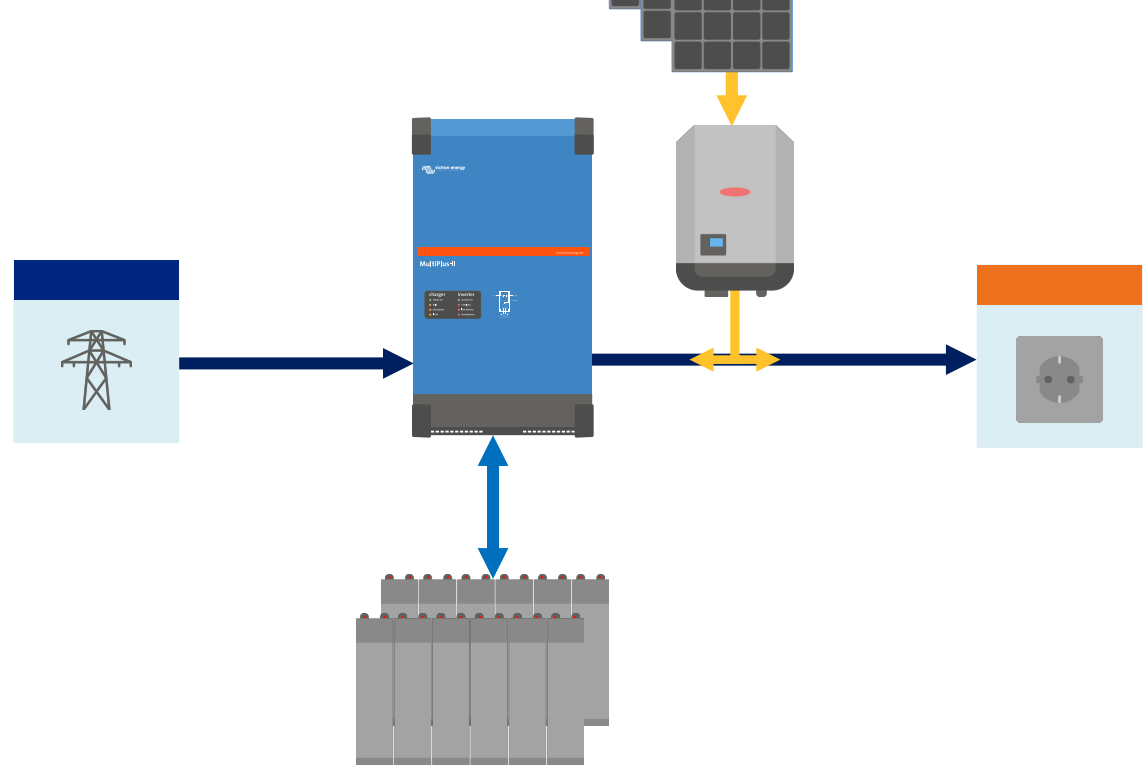i havent bought one yet.
i just need to understand the granular connections if i do go for this. i've read and watched lots of youtube, but can't quite find the practical answers i'm looking for, from the standard wiring diagrams i've seen.
i'm thinking of using it as an ESS in my home. just for storing electricity in the batteries as a UPS.
i'm in the UK. in the countryside. 230v. occasional power outage. - it's annoying when it happens.
electricity comes in from the street,
into the detached garage through the wall,
into the 100a fuse,
then into the smart meter,
then into a (hardly used) consumer unit (lots of spare ways), before going out of the garage, under the driveway to the house where there's another consumer unit for the house etc.
i dont want the multiplus connecting in series between the smart meter and load. is this possible?
i would call this a parallel connection to the electricity backbone. from my basic knowledge of electricity.
do we just take a 32a RCB/MCB Live wire from the consumer unit into the multiplus "AC-IN-1 L" terminal.
and then from the "AC-IN-1 N" back to the the relevant common neutral in the consumer unit.
is that all i have to do?
(of course batteries need to be connected , and rest of the software setup eventually).
or do i have to connect "AC-OUT-1" terminals to somewhere in the consumer unit?
i'm assuming so, but how do i get the powerassist AC-OUT-1 output back into the backbone of the house, and thus out to the house?
thanks, hopefully i've made it clear enough :)


